Which bird might I see today? The Swallow
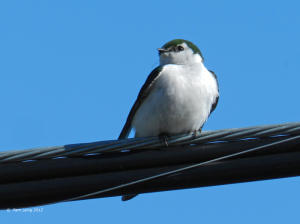
Many people consider the return of the first swallow the first sign of spring. This year the first swallows were seen in Kelowna on March 9th and more will be arriving any day. Six swallow species return here from wintering in the south to take advantage of long summer days and plentiful insect populations as they breed and raise their young. These six species are Violet-Green Swallow, Tree Swallow, Barn Swallow, Cliff Swallow, Northern Rough-winged Swallow and Bank Swallow.
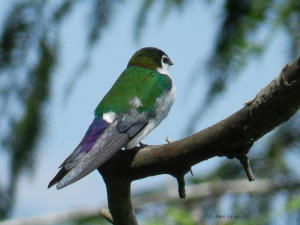
The first to return is almost always the Violet-Green Swallow. This species is a western species, not seen east of the continental divide. Violet-Green Swallows, as their name implies, have beautiful coloration; the back is literally violet and green. The under parts and face of the bird are pure white and it has a white patch on its rump which you can easily see when it is flying.
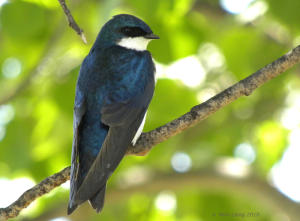
Very soon after, the first Tree Swallow will come back. Tree Swallows are an iridescent blue-black on their backs, with clean white underparts but less white on the face than the Violet-Green Swallow and no white rump. Tree Swallows often nest in bird boxes along fence posts. You might see them on Beaver Lake Road, vying for nest space with the Western Bluebirds.
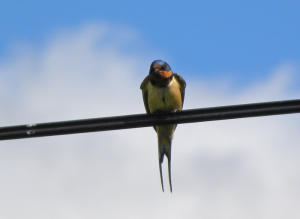
Barn Swallows nest in mud nest colonies under the eaves of buildings such as barns or under bridges or overpasses. I have seen them nesting under lakeside docks as well. They are also beautifully coloured, with a wash of salmon pink on their breast feathers, and a dark blue iridescent back. In addition to the long scimitar-shaped wings which all swallows have, Barn Swallows also have a forked tail, which gives the bird a very sleek, streamlined appearance.
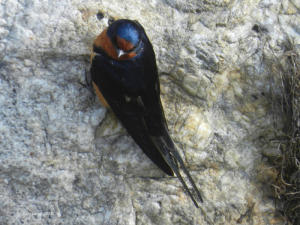
All the swallows are superb aerialists, and will range far and wide in search of air-borne insects on which to feed. They are nature’s mosquito repellent, your best friend! Sadly, repeated spraying of crops and gardens has depleted the number of insects on which they rely, so their numbers are drastically down in recent years. Keep an eye on the sky as you enjoy the advancing spring. Swallows might enchant you with their aerial manoeuvres as they rid your neighbourhood of unwanted flying pests.
Source: Photographs and text by Pam Laing, Lake Country birder.







Sandra Harder
Great information. I will be on the lookout for the different kinds of swallows and not get annoyed with them for building nests everywhere.
lakecountry
It’s great to be informed, isn’t it! Thanks for your input.
Janie Hood
Our skies and power lines in rural Oliver are usually full of swallows at this time of year. We have not had one yet this spring. Where are they?